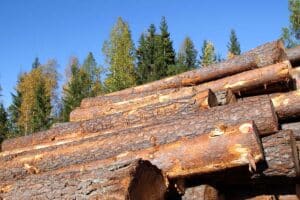In our world, there is no such thing as an “average timber market.” Which, by extension, means there is no such thing as a “regional” timber price delivered log cost. Who buys or sells timberland, manages timber sales for forest owners, or procures logs and stumpage for mills based on regional averages?
If you are in the timber or wood-using sectors, you have to look at the world this way. Deciding where and how to invest in timberland properties or mills is totally different than deciding whether or not to get into – or stay in – the wood and timber business in the first place. In this way, forestry-related forecasting applications serve two totally different masters.
Implications for “Local” Timber Forecasts
When I buy gas for my car, I don’t buy based on the Southwide average for gasoline prices. I compare the local price of the QuikTrip near the house to the RaceTrac near the office. And local can mean different things. Mint Mentos at the airport can cost $2.99 per roll but the drugstore two miles away charges $0.99. While the average price is $1.99, who pays that, and how? (And how “local” is another store anyway after you come through airport security and your car sits in long-term parking?)
When Forisk publishes timber price and log cost forecasts each quarter across the United States, we don’t forecast regional prices. Rather, we project prices by state or defined market. For example, for the South, we forecast prices individually for eleven states by product, and our Southern forecast is a volume weighted average of the eleven states. To us, the Southern price or forecast has little meaning; it is simply an “output” and consequence of doing all of the local work in the individual states. When we back-test and evaluate our models each quarter, we go state-by-state and product-by-product. So if we are “on track” with 8 states and “off track” with 3 (so to speak), we are more interested in those individual stories.
At the end of the day, investment and business decisions get made based, in part, on how local timber markets and wood baskets perform relative to each other given whatever else is happening in the world? Where should you allocate capital or move harvest or sell timberland? Local markets have wide ranges of price levels and volatilities. Our research confirms that differences across markets are statistically significant and provide a rigorous basis to adjust market-specific discount rates, stumpage price forecasts, and expected rates of recovery.
This content may not be used or reproduced in any manner whatsoever, in part or in whole, without written permission of LANDTHINK. Use of this content without permission is a violation of federal copyright law. The articles, posts, comments, opinions and information provided by LANDTHINK are for informational and research purposes only and DOES NOT substitute or coincide with the advice of an attorney, accountant, real estate broker or any other licensed real estate professional. LANDTHINK strongly advises visitors and readers to seek their own professional guidance and advice related to buying, investing in or selling real estate.










Add Comment